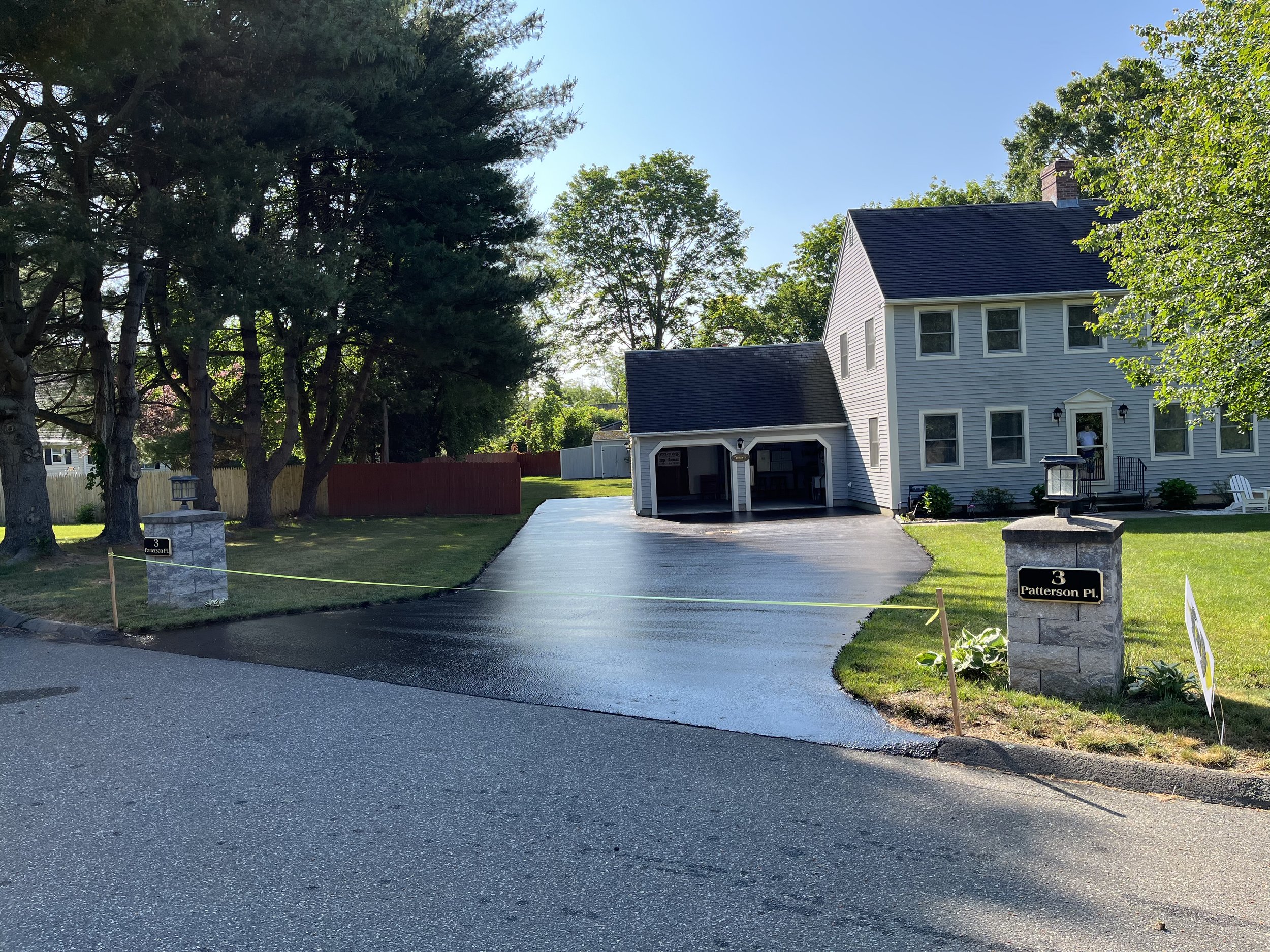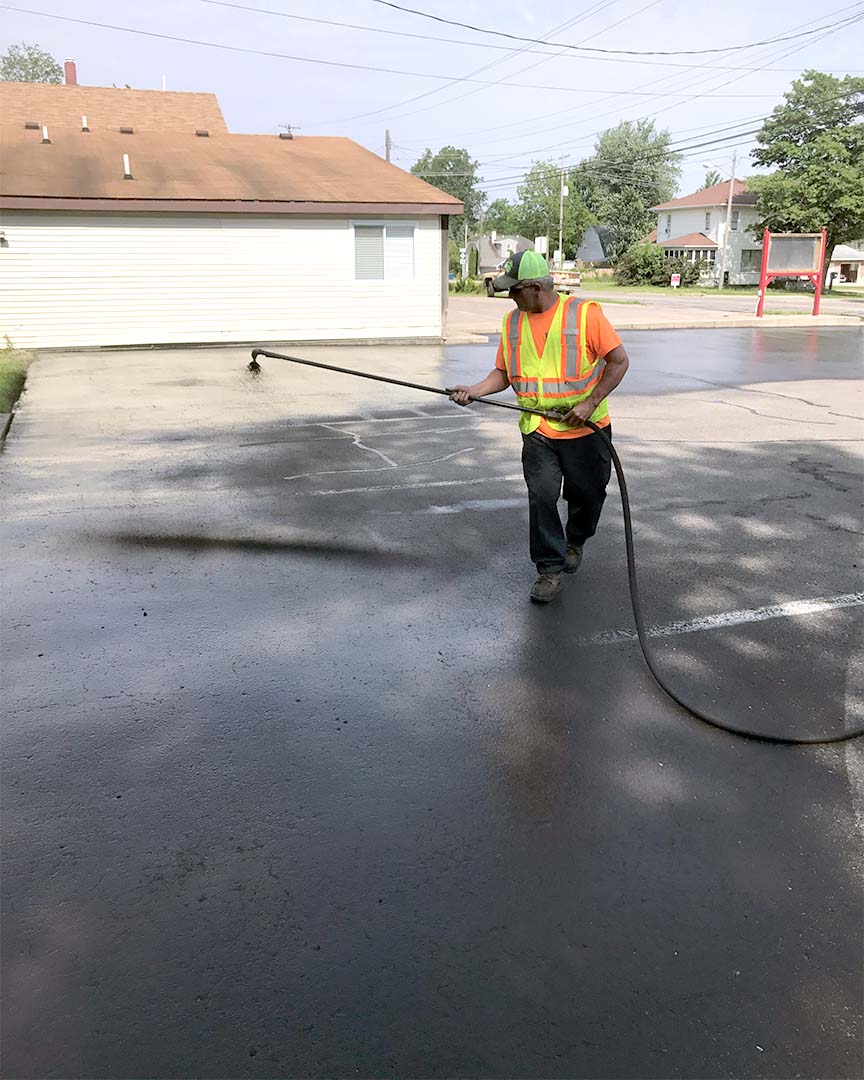Open the Secrets of Asphalt Sealing: Making The Most Of Hot Mix Asphalt Longevity
Hot Mix Asphalt: A Sustainable Solution for Pavement
Hot Mix Asphalt (HMA) has actually become a leading lasting choice for sidewalk options, supplying a myriad of ingenious technologies and ecological advantages. Its capacity to reuse products and decrease energy usage presents an engaging case for its adoption in road building and construction tasks. The long-term efficiency and resilience of HMA make it a preferred alternative for infrastructure development. As the demand for green building and construction techniques expands, exploring the nuances of HMA's sustainability can give important insights right into the future of sidewalk solutions.
Environmental Benefits of Warm Mix Asphalt

Furthermore, Hot Mix Asphalt assists to reduce metropolitan warmth island impacts. Its dark shade takes in sunlight, minimizing the quantity of warm mirrored back right into the ambience contrasted to lighter-colored pavements. This can reduce ambient temperature levels in city locations, decreasing the need for air conditioning and ultimately lowering energy usage.
Furthermore, Hot Mix Asphalt adds to improved stormwater administration. Its porous nature enables water to infiltrate the sidewalk and reenergize groundwater supplies, decreasing runoff and the risk of flooding. These environmental advantages make Hot Mix Asphalt a lasting choice for paving roadways and freeways.
Power Performance in HMA Production
Is power performance a crucial variable in the production of Warm Mix Asphalt (HMA)? Definitely. Energy plays a significant duty in the production of HMA, impacting both expense and ecological sustainability. One crucial aspect of power performance in HMA production is making use of warm mix asphalt (WMA) modern technologies (commercial parking lot paving). WMA permits the blending and positioning of asphalt at lower temperatures compared to conventional warm mix asphalt, leading to lowered power consumption throughout manufacturing. This process not just decreases fuel use yet likewise lowers greenhouse gas emissions, making it an extra environmentally pleasant option.
Additionally, innovations in plant innovations have led to more energy-efficient HMA production procedures. By maximizing energy use in HMA production, the industry can reduce its carbon footprint while maintaining premium sidewalk materials.
Recyclability of Hot Mix Asphalt
The recyclability of Warm Mix Asphalt (HMA) is a critical aspect of its sustainability and long-term environmental impact. HMA is just one of the most recycled materials in the USA, with over 100 million lots of recovered asphalt pavement (RAP) being recycled each year in brand-new pavement building. Reusing HMA provides numerous ecological benefits, such as reducing the requirement for virgin products, decreasing power usage throughout manufacturing, and lowering the amount of waste sent to land my response fills.
The process of recycling HMA involves milling the existing sidewalk, crushing it right into smaller items, and blending it with new accumulation and asphalt binder to create a recycled mix. This recycled mix can often perform along with or even far better than conventional HMA, while calling for less basic materials and producing lower greenhouse gas discharges. By including RAP into brand-new sidewalk projects, road agencies can save all-natural sources, reduce expenses, and decrease the ecological footprint of roadway building and upkeep activities. Overall, the recyclability of HMA plays a substantial duty in promoting lasting techniques within the sidewalk sector.

Long-Term Performance of HMA
Asphalt pavements show durability and durability over an extensive period, mirroring the long-lasting efficiency of Hot Mix Asphalt (HMA) The durability of HMA can be associated to its capacity to hold up against rush hour loads, harsh climate conditions, and the results of aging. Research studies have revealed that properly designed and effectively constructed HMA pavements can last for two decades or even more with routine upkeep. The trick to making the most of the long-lasting performance of HMA depends on using top quality products, complying with ideal techniques in building and construction, and carrying out effective upkeep approaches. Correct water drainage, routine inspections, and prompt repair services are essential for protecting the architectural honesty of HMA pavements with time. In addition, innovations in HMA technology, such as the usage of polymer-modified binders and warm mix asphalt, have actually even more boosted the toughness and durability of HMA pavements. By prioritizing top quality construction and maintenance practices, HMA remains to prove itself as a lasting and affordable solution for lasting pavement facilities.

HMA: Resilience and Sustainability
Showing both toughness and sustainability, Hot Mix Asphalt (HMA) has come to be a cornerstone in the building of long-lasting sidewalk frameworks - hot mix asphalt. HMA's sturdiness originates from its capability to hold up against heavy loads, rough climate condition, and high web traffic quantities, making it a reputable choice for roadways, highways, and flight terminal runways. The composition of HMA, which normally consists of aggregates, binder, and filler, plays a critical duty in boosting its longevity and resistance to tear and wear
Additionally, HMA's sustainability lies in its recyclability and energy-efficient production procedure. The capability to reuse redeemed asphalt pavement (RAP) in brand-new HMA mixtures reduces the need for virgin materials and minimizes the environmental influence of pavement construction and maintenance. Additionally, the energy performance of generating HMA hinges on its reduced blending temperatures contrasted to various other sidewalk materials, bring about minimized power consumption and greenhouse gas discharges.
Final Thought
To conclude, warm mix asphalt (HMA) uses a sustainable service for pavement with its eco-friendly attributes. HMA's recyclability, power efficiency visit this web-site in manufacturing, and long-term sturdiness make it a green choice for road building and construction. By conserving all-natural sources, lowering waste, and lowering greenhouse gas emissions, HMA plays a critical function in promoting sustainability in framework growth. Its capability to alleviate city heat island effects even more emphasizes its importance in producing ecologically conscious and resilient pavement systems.
HMA is one of the most recycled products in the United States, with over 100 million lots read this of redeemed asphalt sidewalk (RAP) being recycled yearly in brand-new pavement building.The process of recycling HMA involves crushing the existing pavement, squashing it right into smaller sized items, and blending it with new accumulation and asphalt binder to create a recycled mix.Asphalt sidewalks show sturdiness and durability over an extensive duration, reflecting the long-term efficiency of Hot Mix Asphalt (HMA) Additionally, improvements in HMA modern technology, such as the usage of polymer-modified binders and cozy mix asphalt, have further enhanced the resilience and durability of HMA pavements. The capacity to reuse recovered asphalt pavement (RAP) in brand-new HMA blends decreases the need for virgin products and reduces the ecological effect of sidewalk building and construction and maintenance.